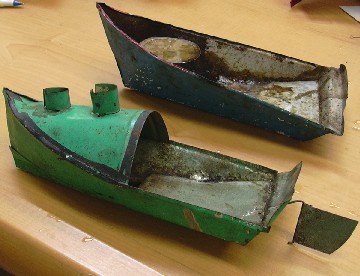
Introduction
The first time I saw a putt putt (aka pop pop, Ponyo) boat I couldn't believe my eyes! I must have gotten every science toy known to mankind when I was a kid: rockets, airplanes, slinkys, the bird that dunks its head in water, the junior chemistry set that I almost burned down the house with...I could name dozens. But it wasn't until I was an adult that I encountered a putt putt steam boat. It was chugging away in an outdoor market in Bangladesh-- in Southern Asia-- one of the poorest countries in the world. Made mostly from a recycled milk tin, it sounded like a tugboat and it really zipped fast--all powered by a little vegetable oil lamp. How could such a cool thing have existed without my knowing about it?
Even more astonishing, I learned that putt putt boats (also called pop pop boats) were once very popular throughout the world in the first half of the 20th century. So why did they disappear? I guess tin toys and steam power seemed antiquated after World War II. Batteries and plastics were the exciting thing happening to toys!
Speaking for myself, I'm tired of plastic and batteries, especially in my kid's toys. I must not be alone. Old fashioned toys--including putt-putt boats are becoming popular once again. Science, model and toy catalogs offer stamped tin boats from Asian countries like India, Pakistan and China. You can pick up old ones on eBay.
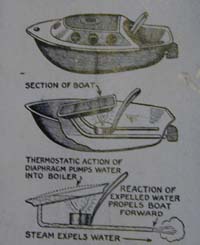
A word about safety: The boat is surrounded by water and the steam engine cannot explode. Yes, the boats use a candle flame, so of course kids have to be supervised and not touch it. But let's put this in context: We annually challenge our young children to position their faces inches from multiple burning candles stuck into a giant pastry.
About Off-the-Shelf Putt Putt Boat
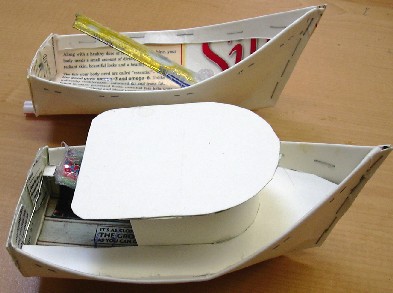
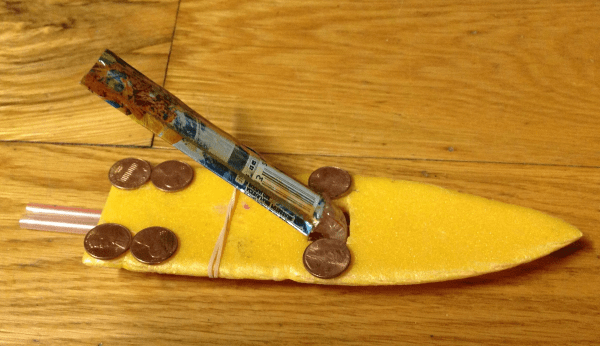
You can make the body of the boat with a recycled, cut-up milk or juice carton, which is easy to cut, water-proof and paintable (although mine are not painted here). Or you make a simpler boat out of a recycled foam grocery tray. In either case the engine is the same, made from a cut-up aluminum soft drink can and drinking straws. The instructions for both the steam engine and the boat are HERE.
Excepting a few experimenters who soldered together engines, putt putt boats have always been something people bought rather than made. Even the boats in Bangladesh required some brass for the engine and solder to seal it. Over the last 15 years I have made hundreds of putt putt boats with one goal in mind: to develop a design such that anybody could make their own. At first I copied engines using brass shim stock, copper tubes and solder. Then I began using epoxy glue instead of solder, and disposable aluminum pie tins instead of brass. After years of slow evolution, I completely redesigned the engine to be made of a cut-up aluminum soda can and flexible plastic drinking straws. Back when I was teaching, almost three hundred of my 8th grade students would make it every year as a technology project.
About Engines
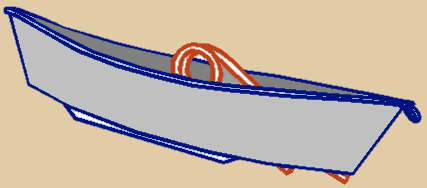
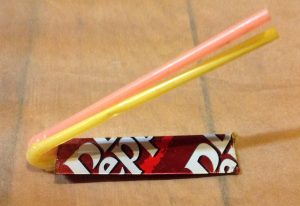
I should mention that there are actually two kinds of putt putt boat: the diaphragm kind I concentrate on in this site, and the looped copper tubing kind. Instructions for this design were in the Cub Scout handbooks from 1954 to 1977. The advantage of the copper tubing engine is the relative ease of construction, and you cannot wreck it with too much heat. The disadvantage of the coil design is that it is often slower and makes little or no noise. If you are interested in this type, click here. And here are explanations of how Putt Putt engines work.
